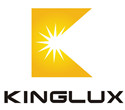| TEL:
+86 510 82123195
|
| Mobile: |
+86 18168862789
|
| FAX:
+86 510 84602998
|
| Email: |
info@kingluxlens.com
|
| MSN:
kingluxlens@hotmail.com
|
| Skype:
kingluxlens
|
| Q Q:
2852820700,2852820701,2852820699
|
|
|
| |
Company News
|
Current Location: Home >
News >
Company News
|
|
Stray light in LED lenses
|
 |
Stray light in LED lenses refers to light that is unintentionally emitted in directions other than the desired output direction. It can occur due to various factors such as imperfections in the lens material, surface reflections, and scattering of light within the lens itself.
Controlling stray light is crucial in LED lighting applications to maximize efficiency and minimize glare. Excessive stray light can reduce the overall effectiveness of the lighting system by wasting energy and causing discomfort to viewers.
There are several methods to minimize stray light in LED lenses:
Anti-reflection Coatings: Applying anti-reflection coatings to the lens surfaces can reduce reflections and minimize stray light.
Surface Texturing: Texturing the lens surfaces can help scatter stray light away from the desired output direction, reducing glare and improving uniformity.
Tight Tolerances: Manufacturing lenses to tight tolerances helps ensure precise control over light output, minimizing stray light leakage.
Optical Design Optimization: Designing the lens with careful consideration of its geometry, curvature, and material properties can help minimize stray light by optimizing light transmission and reducing internal reflections.
Use of Light Absorbing Materials: Incorporating light-absorbing materials or coatings within the lens can help absorb stray light and prevent it from being emitted in unintended directions.
Lens Design: Choosing the appropriate lens design, such as total internal reflection (TIR) lenses or collimating lenses, can help direct light more efficiently and reduce stray light.
By implementing these techniques, manufacturers can improve the performance and efficiency of LED lenses by minimizing stray light and maximizing light output in the desired direction.
|
|
|


